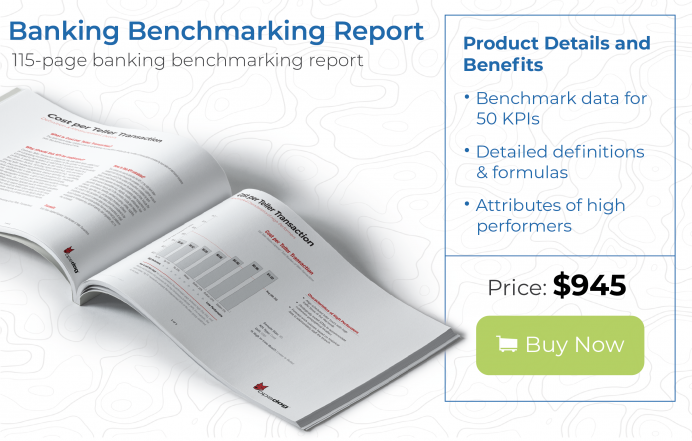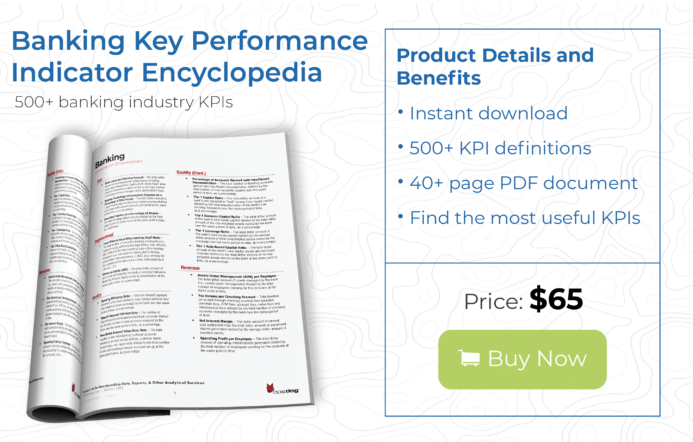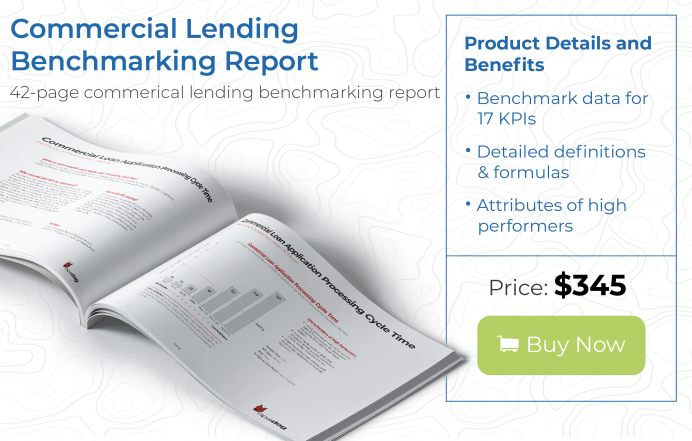Even as customers flock to online and mobile banking channels, brick-and-mortar retail bank branches continue to play an essential role in serving customers. Branches are still a leading sales channel for bank products and services, and most customers still value face-to-face transactions at their local retail branch—even if they don’t visit it very often.
But branches are also one of a retail bank’s biggest operational expenses. A commonly cited statistic is that the same transaction done in a branch costs about $10 compared to about 25 cents in the digital channel. Streamlining retail branch operation expenses can seem insurmountable, but with the right retail banking benchmarking tools, it can be successfully done.
What is Retail Banking Benchmarking?
Retail banking benchmarking can be defined as evaluating retail branch operations or processes, such as quality or productivity, through comparisons to an internal company standard, peer group performance, or industry averages.
Customer expectations and delivery channel preferences are changing at a rapid pace. In addition, deposit growth is slowing industry-wide. To remain competitive, banks need to evolve their branch banking model to become more efficient and less of a drain on profitability. They need to make operational decisions to optimize their investment in their legacy branch locations such as whether to consolidate branches, close branches or reconfigure branch staffing.
Retail banking benchmarking allows banks to analyze the performance of their branch network compared to their peers, from the productivity of individual tellers to the profitability of its overall branch footprint.
How Benchmarking is Used in Retail Banking
The shift toward digital channels has prompted some banks to close retail branches and beef up their self-service functionality. Others are taking the opposite approach, expanding their branch network, albeit with branches that look different than the traditional teller row and platform banking functions. Retail banking benchmarking provides data that help bank executives make these strategic decisions about the future of the branch.
As banks collect data, problem areas and opportunities for improvement become visible. Continuous benchmarking allows banks to monitor how changes in staffing and operations impact performance, identify the levers to push, and how to best use resources.
For example, if the number of deposits in a branch is not growing, benchmarking a variety of metrics will help the bank analyze if the problem is a low growth market or poor location, lack of employee training in cross-selling new accounts, outdated and manual processes that inhibit easy onboarding of customers, long lobby wait times, or a combination of factors.
Examples of Retail Banking Benchmarking Metrics
There are many different retail banking benchmarking metrics that banks can use to measure their retail branch performance. Here are five of the most widely used metrics to benchmark for your bank:
Benchmark #1: Deposit Accounts per Branch
Since brick and mortar branches are expensive to maintain and operate, measuring the number of deposit accounts per branch is an important metric of branch profitability. To calculate deposit accounts per branch, divide the total number of deposit accounts the bank manages by the number of retail branch locations.
If the branch network is underperforming compared to peer banks, the culprits could be ineffective marketing and advertising, confusion from potential customers on how to open an account, poor site locations, or a lack of visibility into a customer’s share of wallet with the bank.
Benchmark #2: Cost per Teller Transaction
Employee costs figure prominently in branch operating costs, so while banks want to minimize staffing costs, they need to balance staffing cuts against customer service. Cost per teller divides the total bank teller-related costs by the number of basic account transactions completed. Costs include teller labor, overhead, and technology. Platform employees and branch managers are not included.
If the cost per teller transaction is high, the reasons include manual processes, too many tellers at low traffic times, and subpar teller training and education. To help reduce costs, consider installing ATMs to offload some of the more mundane transactions.
Benchmark #3: Average Retail Branch Lobby Wait Time
Although banks are anxious to reduce their branch operating costs by minimizing staffing, doing so can negatively impact customer satisfaction. Customers who experience lengthy wait times to open an account, apply for a loan, or do other non-transactional activities can become frustrated and take their business to the competitor down the street.
To calculate average retail branch lobby wait time, add the total number of seconds that customers waited for a non-teller employee by the total number of non-teller customer visits over a set period of time. Calculate the wait time from the time the customer signs in or is acknowledged until meeting with the non-teller employee.
Long wait time may indicate that branch staff is untrained and inefficient whereas an extremely short wait time may indicate overstaffing. Banks can also use the wait time to analyze peak hours for staffing and some banks use this benchmark to determine if implementing appointment scheduling makes sense.
Benchmark #4: Transactions Processed per Teller
Banks can decide to measure the overall productivity of all tellers, a group of tellers, or even an individual teller by taking the total number of teller transactions completed by the number of tellers processing transactions for the same time period. Only include those transactions that can be completed by a teller, such as deposits, withdrawals, cashiers’ checks, wire transfers, and account balance inquiries.
This metric allows banks to identify individual tellers or groups of tellers who may need additional training and allows retail branch managers to better schedule tellers for peak business hours. Low teller transactions processed could also mean that the branch is overstaffed.
Benchmark #5: Retail Branch Span of Control
This retail banking benchmarking metric averages how many branch employees report to each retail branch manager. Banks that have flattened their organizational structure will tend to have more employees reporting to each manager. While a low span of control, or management span, can keep staff costs in check, managers that supervise more than about 15 employees may not have as much time for talent development and training as managers with fewer direct reports. However, fewer than six direct reports could mean the bank has redundant or unneeded branch managers.
To calculate the retail branch span of control, add the total number of direct reports and divide by the number of managers. Include all managers who have a manager job title and pay grade even if they don’t have employees reporting to them.
Final Thoughts
Since every bank has different retail strategies, retail banking benchmarking metrics can vary greatly between institutions based on customer segments, their focus on personal relationships versus self-service, and whether the bank embraces technology. Benchmarks serve as a useful indicator of how a bank compares to its peers, but any insights must be tempered by the bank’s strategic goals.
Choosing the right benchmarking metrics is crucial to success, and that’s where we can help. For a complete list of retail banking benchmarking metrics, download our comprehensive Banking Benchmarking Report here.
Do you need help harnessing business intelligence (BI) for your bank? Find out how to see into operations data within a few months here!
If you need a deeper dive into benchmarking for your retail bank branch operations, contact us for more information concerning our Benchmarking Research and Business Intelligence Implementation services for quick help with retail banking benchmarking. We will provide you with affordable presentation-ready deliverables to help boost your retail bank operations.



